How to Jibe a Windfoil
Royn Bartholdi
The beauty and appeal of windfoiling is the feeling of "flying, like magic, over the water in a continuous flow, back and forth, upwind and downwind. Learning to jibe is a necessary skill to capturing the experience, but is frustrating for many because we do not have as much stability of the board on water. To that extent, I have found performing the move in discreat sections is the way to go! Specifically, performing the foot switch after the sail flip.
Before you get started, be sure to read the Safety and Notes sections near the bottom of the page. This tutorial is aimed primarily at the freeride windfoiler and not the sailor on race gear . (or larger boards) who might be more comfortable with the step jibe approach.
Steps
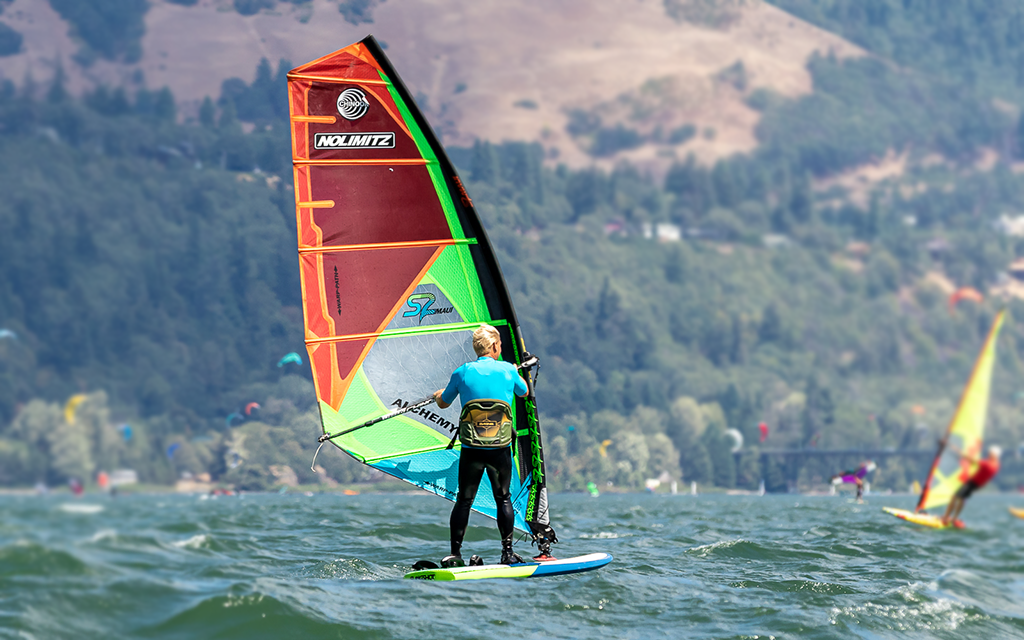
Get Ready
Look for an open area on the water where you want to jibe (while you are learning, you will need a lot of space). Unhook from your harness line and take your backfoot out of the footstrap. Place the back foot just in front of the back footstrap, slighly over the centerline and on the opposite rail. Begin a broad reach and begin by oversheeting the sail a little to maintain speed and riding the foil low in the water. (I find riding the foil low reduces the chance of breaching as we complete the maneuver) Keep consistent pressure on the inside rail to maintain the carve.
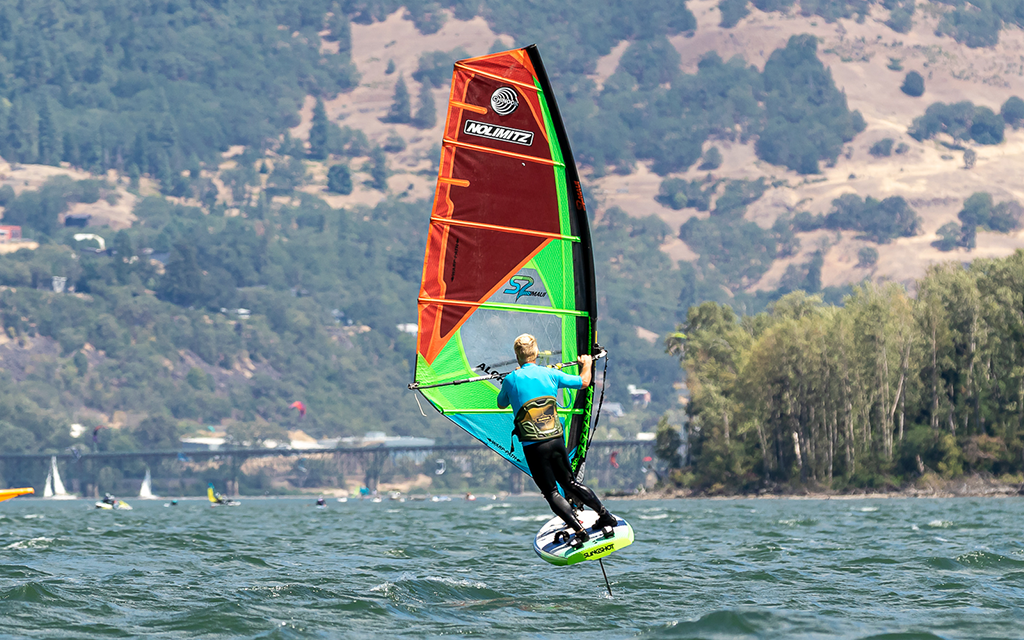
Carve Slow and Steady
Continue by maintaining a slow and steady carve during the duration of the turn, with a predictable and balanced stance over the centerline and steady foot pressure. Remember that sudden moves do not fair well and you want to keep the foil happy by maintaining flight. Also keep in mind that the foil has way less friction than a board on water, so maintaining speed is easier. In fact, I opten just just sheet out and keep gliding at a uniform speed. This is the foundation for windfoiling: riding the foil.
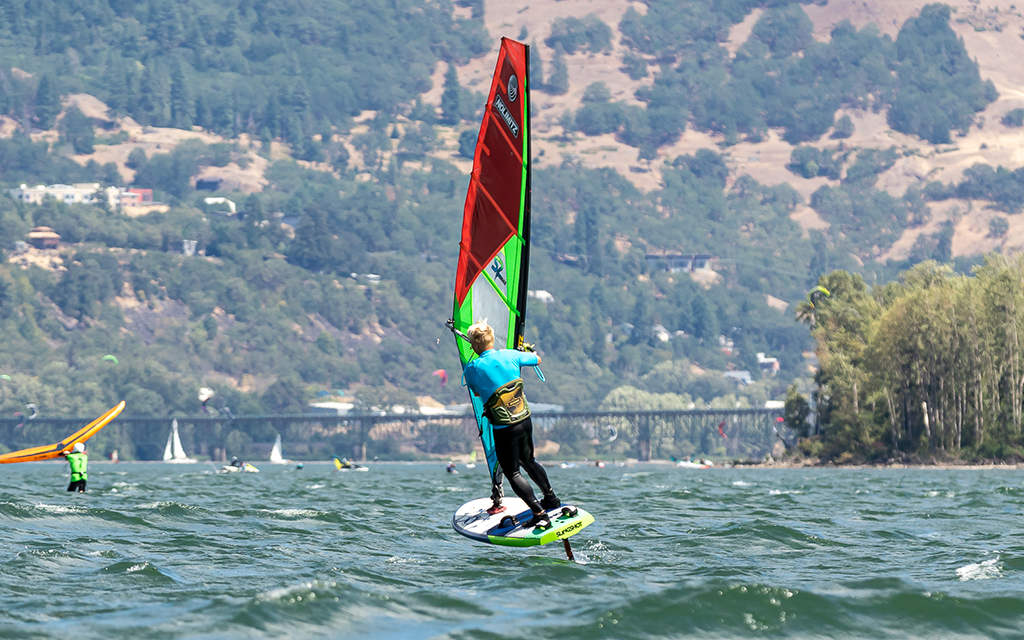
Flip The Sail
Perform the sail flip at the bottom of your jibe, just as you are making the final transition to the other tack. Exiting on a broad reach (heading more downwind). At this time there will be no power in the sail, so this is perhaps the easiest part of the move because you are simply releasing the back hand and the sail will rotate as you maintain a carve in your jibe.
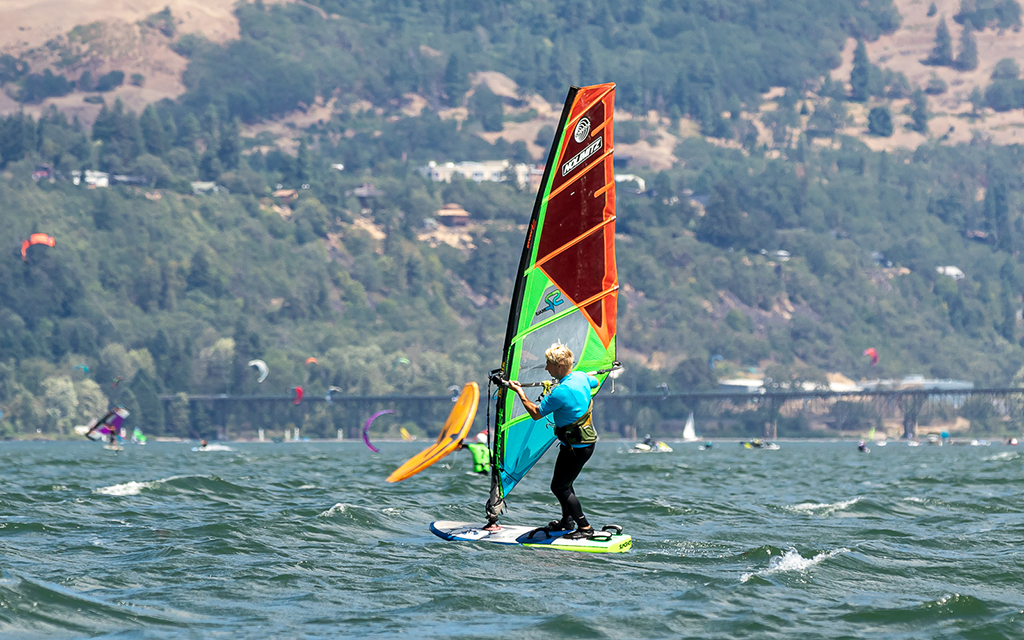
Sail Switch Stance
Sail in the switch stance foot position for a little while, until you feel stable in your stance and balanced with your sail. For some, riding switch stance is new so this will feel a little awkward at first, all twisted up and all.
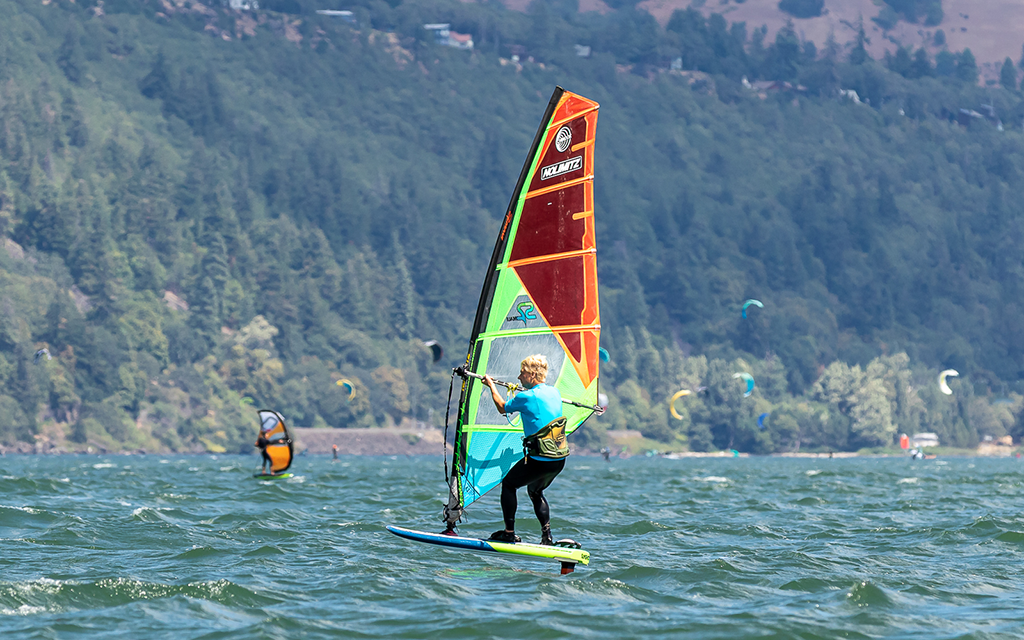
Switch the Feet
I believe the foot switch is the hardest aspect of learning to jibe on a foil because you simply cannot just stomp on the rail anywhere and reposition as needed. To avoid crashing, we need to maintain our gravity over the centerline. So, the foot switch is a subtle movement with your feet, almost a dance-like move, all the while keeping your body over the centerline of the board (more or less). For sure, ballroom dancers will have an advantage here.
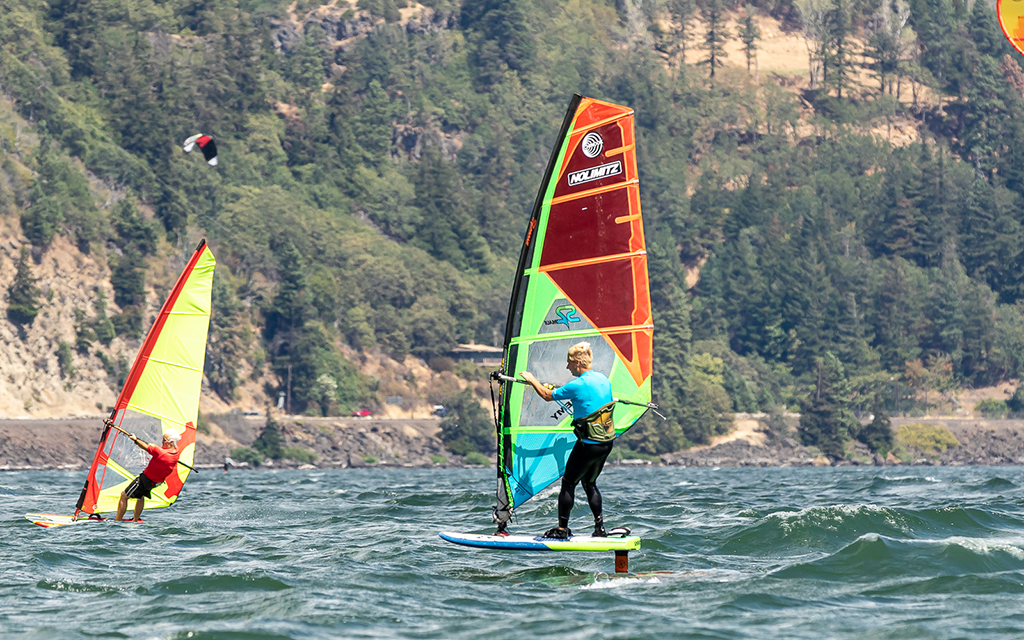
Sail Away
Yep! You are now flying like a bird in a continuous motion, back and forth, across space. Enjoy the flight.
Safety
- People Need Their Space - With respect to safety and others, make sure there is plenty of open space before your jibe (no sailors, wingers, kiters, etc.) because other people will feel at risk being close to you while you are jibing.
- Tight Footstraps Can Cause Injury - I suggest you keep your footstraps a little loose so your foot can slip out easier during a crash. Feet caught in the footstrap are a little more at risk than fin windsurfing because the board (powered by the foil) has a tendency to rise as you are falling down, hence causing your feet to jam and then torque. In addition, the foil has more mass and will not slide away like a small 5 inch fin. This has happened to me a couple times with a few sprain ankles. Just saying!
- Wear Protective Gear For Safety - There is risk in this move for sure, and possible injuries. I recommend loading up with protective gear: wetsuit, booties, helmet, an impact vest, and anything else you feel might help, especially when you're learning the move.
Notes
- Choose Ideal Learning Sessions (beginners) - In the beginning, you want ideal wind conditions: not overpowered or underpowered. And like all sports, a learning environment tailored to you, your goals, your ability, and your sailing style is preferred. You want to feel comfortable with your rig, wind conditions, and jibing spot. As you progress and become more skilled, the range of possible conditions increases. Then, lo and behold, I suggest the opposite: start choosing challenging conditions to improve.
- Go Slow and Wide - Start learning this maneuver by slowing the entire process down -- you're in slow motion like in a Holywood action scene -- and taking a long, drawn-out jibe with a big arc through the entire maneuver. Particularly near the jibe end, where foilers frequently hook upwind. Don't worry so much about getting too far downwind (legacy sailing) because windfoiling has an amazing ability to head upwind.
- Try No Footstraps - Some windfoilers ride without footstraps, some with just the front straps, and some with both front and back footstraps. An option is to learn without using the straps, which for some (but not all) may be a faster learning curve. This is a way to focus on being over the centerline of the board. Give it a try!
- Time and Space - One of the coolest experiences you get during windfoiling (compared to traditional windsurfing) is that your concept of space changes.
Skill Development
Here are some training drills you can try on the water to help you during your progression in learning How to Jibe a Windfoil.
- Practice Turning - Take some time learning how to fly the foil as you turn upwind and downwind (weaving your way across the water) so you acquire the skill and feel of the foil's dynamic.
- Practice Foot Work - Practice the footwork (switching to regular) on land. The movement is subtle and has a dance-like quality. Watch what other windfoilers are doing with their feet. The foot movement is basically tight (no big clomps) and performed in a small area between the footstraps. As you get better, you will be able to switch right into the front footstrap.
- Practice Switch (advanced) - Sail out of the jibe and maintain the switch stance for a long time. Get used to the way your body feels in the torqued position. Practice turning up and down into the wind. You can even jibe from the switch position.

